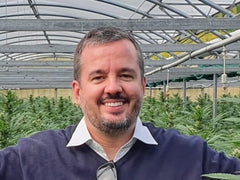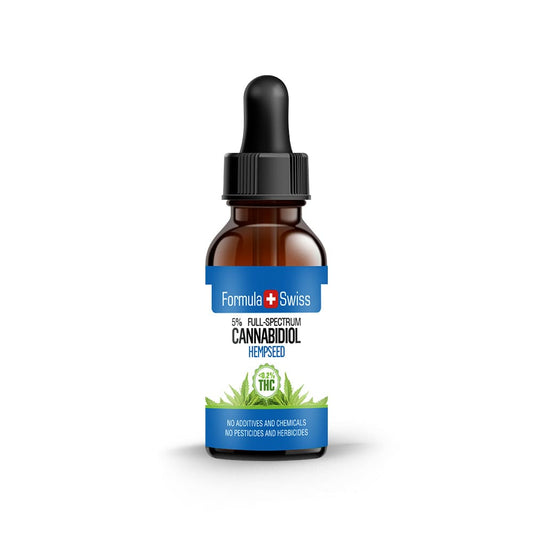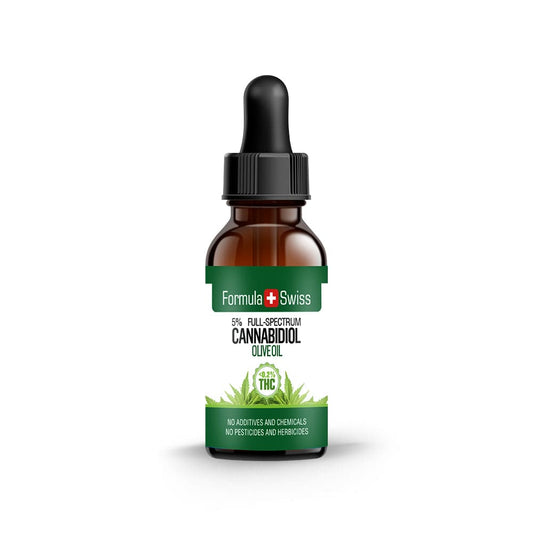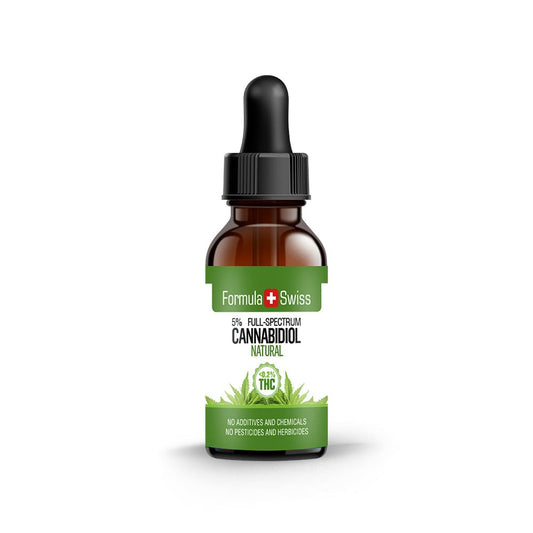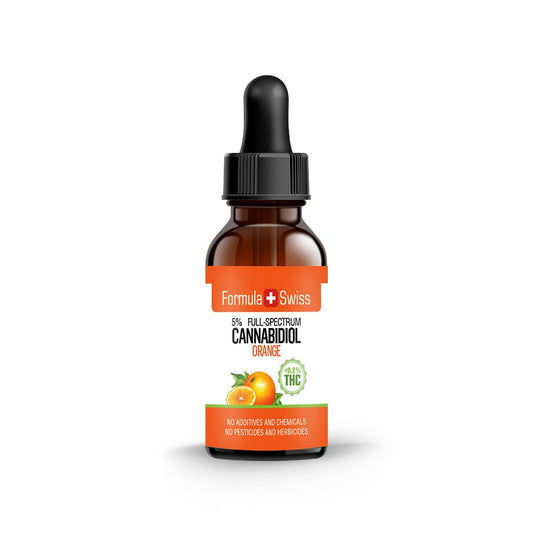CBDV, or cannabidivarin, is a non-intoxicating cannabinoid that occurs naturally in certain types of Cannabis sativa. It's closely related to CBD, but with a slightly different chemical structure that gives it its own unique characteristics. Although it was first identified in the 1960s, real interest in CBDV has only picked up in more recent years.
From what I’ve seen over time, there’s a growing interest in cannabinoids that go beyond the well-known ones like CBD and THC. CBDV is one of those lesser-known compounds that’s starting to get the attention it deserves—both in research and in conversations around cannabinoid diversity.
Personally, I find it fascinating how these minor cannabinoids are slowly reshaping the way we understand the cannabis plant. As more information becomes available, I’ve found myself wanting to take a closer look at what makes CBDV different—and why it matters.
Prefer watching over reading? This video covers the key points from the article:
Save up to 30% when you order your CBD oil today
Key takeaways
- CBDV (Cannabidivarin) is a lesser-known phytocannabinoid naturally found in hemp, offering unique characteristics within the cannabinoid family.
- Unlike THC, CBDV is not associated with psychoactive effects, making it a focus for researchers and product developers exploring non-intoxicating compounds.
- CBDV’s distinct molecular structure sets it apart from other cannabinoids, prompting continued investigation into its chemical and receptor interactions.
- Ongoing exploration of CBDV contributes to a deeper scientific understanding of Cannabis sativa and its broader cannabinoid profile.
This article is provided for informational purposes only and does not relate to any of the products available in our webshop. For more information, please see our full disclaimer.
Understanding CBDV (Cannabidivarin) and its origins
Cannabidivarin (CBDV) is a naturally occurring cannabinoid found in certain varieties of Cannabis sativa, particularly those with lower levels of THC. First identified in the 1960s, it has since attracted attention for its distinct chemical structure and non-intoxicating profile.
Although CBDV shares similarities with CBD, subtle differences in its molecular composition have made it a point of growing interest in cannabinoid research. These differences help to distinguish CBDV within the broader group of naturally occurring compounds present in the cannabis plant.
Defining CBDV in the context of Cannabis sativa
CBDV is one of the many cannabinoids synthesised by Cannabis sativa. This species produces a complex array of compounds, including terpenoids and flavonoids, which contribute to the diversity of cannabinoids formed through its metabolic pathways.
CBDV appears as one of the phytocannabinoids expressed under particular genetic and environmental conditions, reflecting the variability and richness of cannabis chemistry.
Discover premium CBD oils with up to 30% off
The botanical sources of CBDV
CBDV is primarily sourced from Cannabis sativa strains that have been selectively cultivated for their cannabinoid profiles. Agricultural practices designed to enhance specific phytochemical outputs play an important role in determining CBDV production.
Variation in CBDV concentrations has been observed to depend on both genetic factors and environmental influences such as soil quality, climate and cultivation methods. A 2021 study published in Plants (MDPI) by Kim et al. explored how genetic expression and cultivation practices affect cannabinoid yields, contributing to a clearer understanding of CBDV variability.
What is THC (Tetrahydrocannabinol)?
Chemical structure and properties of CBDV
The chemical structure of CBDV differs from other cannabinoids such as CBD and THC. Its unique molecular composition is central to explaining its non-intoxicating profile, which is a point of interest in current cannabinoid research.
Studying cannabinoid biosynthesis in cannabis plants provides insight into how compounds such as CBDV are formed. This process, though complex, is key to understanding the diversity of cannabinoids and their roles within the plant.

CBDV’s non-psychoactive character makes it a subject of interest in scientific research. Unlike THC, CBDV does not produce euphoria or alteration of perception, which supports its investigation for different applications.
Based on my analysis of available studies, this distinct property positions CBDV as an area of continuing academic focus within cannabinoid science.
| Compound | Psychoactive property | Chemical structure |
|---|---|---|
| CBDV | Non-psychoactive | Shorter chain compared to THC |
| CBD | Non-psychoactive | Similar to CBDV, lacks THC potency |
| THC | Psychoactive | Longer chain, impacts neurological pathways |
Medical research and potential uses of CBDV
Scientific interest in cannabidivarin (CBDV) has grown in recent years, particularly concerning its study within neurological research contexts.
Researchers are investigating CBDV’s interaction with biological systems relevant to neurological studies, focusing on its non-intoxicating properties and the potential relevance of its chemical structure within the context of neurological research.
Take advantage of up to 30% savings on CBD oil
Influence of CBDV on neurological function
CBDV is not associated with psychoactive effects, which has allowed it to be studied without concerns relating to altered cognitive perception. Research has explored its interaction with neurological pathways, including investigations into its role in nerve activity.
A paper published in Epilepsia Open (2022) examined CBDV in the context of neuronal hyperexcitability, identifying this as an area of scientific interest while noting that further research is required to understand its full significance.
Autism and CBDV: Investigating the connections
The potential relationship between CBDV and autism spectrum conditions has attracted increasing attention in scientific research. Studies are assessing whether CBDV may influence neurological pathways linked to behavioural expression.
Early-stage investigations, such as those outlined in the Journal of Psychopharmacology (2021), have focused on the safety and feasibility of CBDV in controlled environments. At present, no definitive conclusions have been reached.
CBDV in epilepsy research
Because it is non-psychoactive, CBDV has been included in studies examining seizure-related mechanisms. Preclinical research has investigated its activity in seizure models to better understand its interaction with neurological pathways, separate from the psychoactive effects linked to THC.
Clinical trials are ongoing, but findings remain at the exploratory stage and further validation is necessary before any conclusions can be drawn.
Which cannabinoids produce a psychoactive effect?
Exploring the potential side effects and safety profile of CBDV
It’s clear how important it is to understand the safety profile of CBDV. Current cannabinoid research is paying close attention to the side effects associated with compounds like CBDV.
Recent findings, highlighted in a safety assessment report, point to the complexities surrounding CBDV. The report notes that concentrations can vary between batches, underlining the need for strict quality control and a thorough understanding of its characteristics.
From a research perspective, it’s essential to carefully evaluate any observed effects of CBDV in the context of ongoing studies. Considering both potential properties and possible risks is key to upholding high standards of safety and quality.
Taking a detailed, transparent approach to assessing CBDV helps build trust with consumers and strengthens confidence in the products available.
Secure up to 30% off on selected CBD oils

Research into CBDV continues to evolve. My focus remains on investigating its side effect profile and supporting the development of robust safety standards. Every stage, from laboratory studies to considerations in product formulation, must meet rigorous expectations for safety and scientific integrity.
How are new cannabinoids being discovered and classified?
CBDV products and their availability
There has been a growing interest in products featuring cannabidivarin (CBDV), driven by increasing consumer curiosity towards cannabinoid-based options. These products are now offered in various formats, often referred to as 'full-spectrum' or 'broad-spectrum', indicating the differing profiles of cannabinoids present.
These formulations often combine CBDV with other naturally occurring cannabinoids, including cannabidiol (CBD) and trace amounts of delta-9-tetrahydrocannabinol (THC).
Differences in cannabinoid profiles between products emphasize the need for consistent manufacturing practices and clear, accurate labelling to maintain consumer confidence.

Among the available formats, CBDV tinctures have become a popular choice, appreciated for their versatility and ease of use. The complexity of the cannabis plant brings both challenges and opportunities for product development.
As research on CBDV progresses, the market is expected to continue refining standards around product quality and cannabinoid composition.
Personal perspective
When I first got involved with cannabinoids, I rarely heard anyone mention CBDV. Even though researchers had identified it years before, it seemed to sit quietly in the background. But as curiosity around the full complexity of the cannabis plant started growing, I found myself paying more attention to this particular compound and what sets it apart.
What keeps drawing me to CBDV is its distinct structure and how it interacts with the body’s endocannabinoid system. It doesn’t produce any intoxicating effects, but its presence opens up all sorts of interesting questions that researchers are still looking into, especially in areas touching on brain function and behaviour.
In developing cannabis-based products, I’ve noticed a gradual, meaningful shift. There’s been a growing recognition that a broader cannabinoid profile can really add something valuable. More and more professionals are starting to treat compounds like CBDV not as background elements, but as genuinely important contributors to the overall picture.
Personally, I think this change is long overdue. Giving proper attention to less familiar cannabinoids like CBDV brings in a fresh perspective. It pushes us closer to more mindful practices and a fuller appreciation of everything this plant has to offer.
Explore CBD oil options and save up to 30%
Frequently asked questions
What is CBDV (Cannabidivarin)?
CBDV, or cannabidivarin, is a non-intoxicating cannabinoid naturally occurring in certain cannabis and hemp varieties. It belongs to the same molecular family as CBD (cannabidiol) and is a homolog of it with a shorter side chain.
How does CBDV differ from CBD and THC?
CBDV differs chemically from CBD and THC by having a propyl (three-carbon) side chain instead of a pentyl (five-carbon) chain. This structural variation influences its interaction with receptors and its non-intoxicating properties.
Where does CBDV come from?
CBDV is found primarily in cannabis strains with a higher concentration of CBD, particularly in landrace varieties originating from Asia and Africa. It is naturally synthesised by the cannabis plant during its growth cycle.
Can CBDV get you high?
CBDV does not produce psychoactive effects and is considered non-intoxicating. Unlike THC, it does not activate the CB1 receptor in the brain in a way that alters perception.
How does CBDV compare to CBD and THC?
CBDV shares a similar molecular framework with CBD but differs in its chemical structure. Unlike THC, current research does not associate CBDV with cognitive or euphoric effects.
How is CBDV biosynthesised in cannabis?
CBDV is biosynthesised through the same cannabinoid pathway as CBD, but it begins with divarinolic acid instead of olivetolic acid. The pathway leads to the formation of cannabidivarinic acid (CBDVA), which decarboxylates into CBDV.
Which cannabis strains contain higher levels of CBDV?
Strains such as African landraces and certain hemp varieties, including strains like "Erdpurt" and "CBD Therapy", are known to contain higher levels of CBDV. These strains are typically low in THC and selectively bred for minor cannabinoid content.
What is the difference between CBDV and THCV?
Both CBDV and THCV have a propyl side chain, but THCV is psychoactive at high doses while CBDV is not. THCV interacts with both CB1 and CB2 receptors differently from CBDV, which has a limited affinity for these receptors.
How is cannabis and hemp tested for THC levels?


